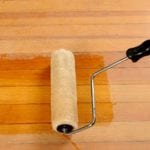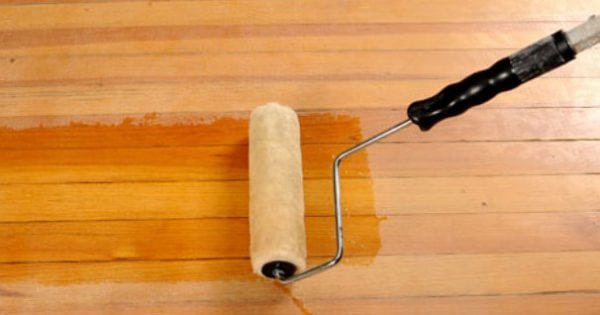Applying varnish to a tree is a rather laborious job. For its implementation, specialized chemistry and equipment are needed. It is generally recognized that a qualitative result to a large extent depends on the selected tool, which is usually used brushes, rollers or spatulas. When it comes to manual varnishing, varnish rollers are usually used.
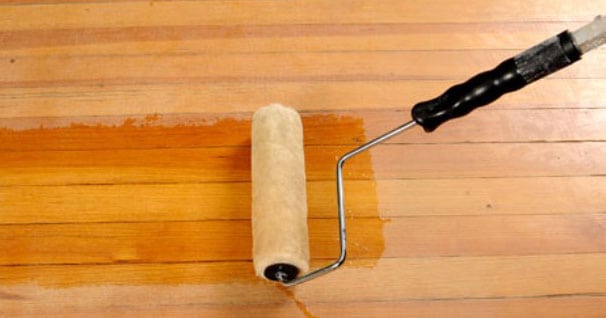
The right roller choice
For lacquering parquet Two types of rollers are used: short or long pile. Differences in the length of the pile are not accidental, since each type of tool performs its tasks: short-haired - are needed for working with water-based varnishes, long-haired - for varnishes with solvents.
Moreover, there are no rollers that are suitable for working with any type of paint materials. Therefore, tools must be selected based on the type of varnish.
If you use the roller with a short pile correctly (that is, do not lift it during varnishing and do not press it too much), the consumption of paint and varnish material will be from 90 to 100 g. per square of coverage. Rollers with a long pile are more wasteful: from 100 to 120 gr. paint material per square meter.
The rollers offered on the market also differ in the so-called “fur coat” (working surface of the tool). For parquet works, “fur coats” are used, made of such materials:
- polyamide (perlon or nylon);
- polyester (faux fur or foam);
- natural material (animal fur, felt, velor or mohair).
For work with parquet, rollers with a "fur coat" made of polyamide or fur (both natural and artificial) are usually used. If we are talking about a tool with a short pile, most often used felt or velor.
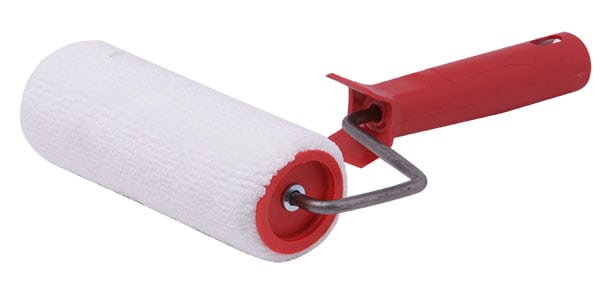
A key characteristic of the roller is the ability of the material of the coat to withstand the effects of certain chemicals. For example, foam rubber is resistant only to water-based varnishes. But if the foam is in contact with the solvent, the destruction of the material begins. For a solvent, a roller based on faux fur is better.
Another indicator to pay attention to is the size of the instrument. A large roller is not so convenient compared to a small one, since it is more difficult to create a uniform and dense coating with it. When choosing a size, it is better to give preference to the golden middle: a medium-sized tool is the best solution.
to contents ↑Surface varnishing
When working with a roller, you need to take into account the characteristics of the reaction of the pile to the operation process. The longer the pile, the more it deforms when applying varnish to the treated surface. The main changes in the pile: it bends, bald spots appear. The consequence of this is a decrease in the quality of the coating, the occurrence of unevenness and unevenness in the applied layer.To prevent such situations, it is better to use a long-nosed tool with a reinforced “fur coat”. Such an inventory is worth more, but the quality of varnishing, subject to technology, compensates for the high price tag.
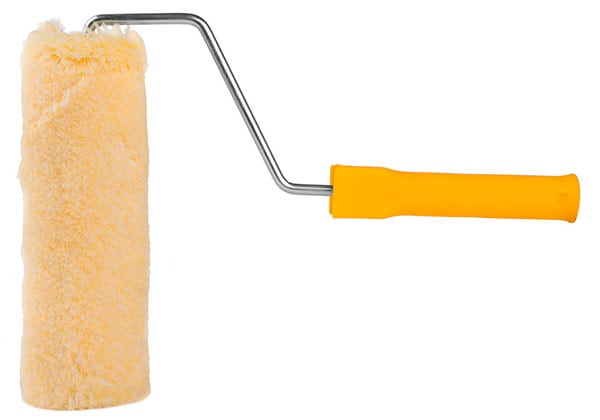
When varnishing a wooden surface, the roller should be perpendicular to the hand. The varnish is applied across, and is equal along. Moreover, each action is a movement of the tool by ¾ of its width. The uniformity of the coating can be achieved if the movements are smooth and reciprocating.
High-quality work implies the absence of droplets and all kinds of defects on the coating, such as bubbles or craters. The coating should be dense and durable, and tones uniform.
to contents ↑Comparison of different types of rollers
The optimal selection of the roller is one of the main factors determining the quality of varnishing. Often the choice is between polyamide and polyester inventory.
In favor of polyamide, there are such arguments:
- For polyester-based rollers, performance is significantly reduced compared to equipment with a “fur coat” made of polyamide. In particular, this is manifested due to a decrease in the volume of applied varnish, which means lower productivity per square metro of the treated surface. This also means that a polyester tool needs to be changed more often.
- The smallest layer of dried varnish should not be lower than 80 microns. Such an indicator can be obtained if the density of the material is at least 300 g. per square meter. At the same time, polyester-based rollers make it possible to have a density of one layer up to 100 g. per square meter, while a tool made of polyamide - about 120 gr.
Please note: a good indicator of the spreadability of the paint and varnish material is an important factor ensuring a high-quality result. If too little varnish is applied, the so-called orange peel, sagging, uneven glossy effect may appear on the surface.
Thus, these factors allow us to conclude that the performance of the tool made of polyamide is higher: their use is more justified both for financial reasons and from the point of view of quality work.

